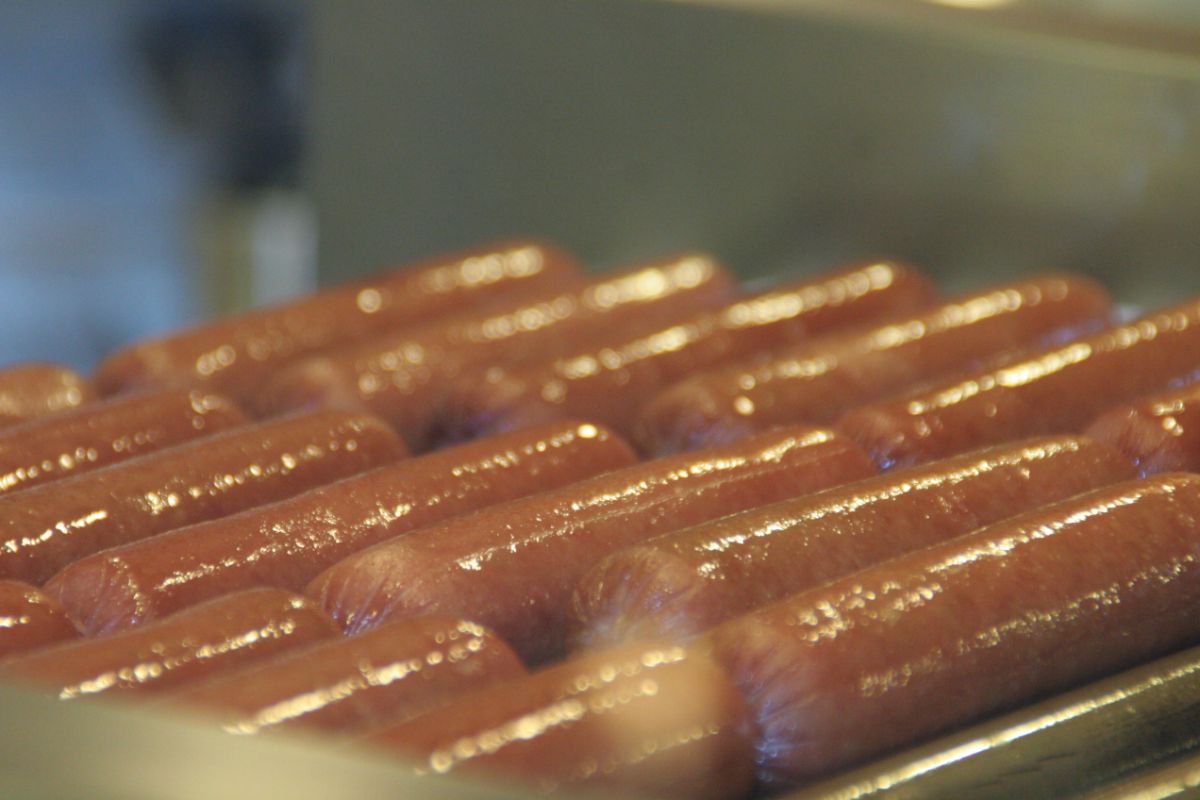When reheating any precooked pork product, it is important to do things by the book – ensuring that they are reheated thoroughly in the best possible way – so as to avoid any potential food poisoning, illness, or indeed a bad tasting meal.
One example of this is hotdogs – a food that often comes part cooked, and which has very specific needs when it comes to reheating and storing.

But this begs the question: what are the best ways to reheat hotdogs, and which are best avoided?
The Best Reheating Methods
When it comes to reheating hotdogs, there are certain methods that you could try – all of which will reheat the core temperature of the hotdogs safely and thoroughly.
In The Microwave
This is probably the most common method of reheating hotdogs, but there are still certain steps to follow.
This is certainly the quickest and most convenient method of reheating, and to do this you need to take the pre-cooked hotdogs, placing them in a bowl of shallow water.
This will help maintain moisture inside the hotdogs, and stop them from becoming dry during the microwaving process.
You should also be sure to set them at 40 seconds to begin with, checking the temperature once the time has elapsed, and then heating further in increments of 20 seconds until you are satisfied with the temperature.
In The Oven
Another common reheating method for hotdogs is to use the oven, and there are some steps you can follow for this method as well.
This is better for larger batches of hotdogs, and means you can fit them inside more easily. To do this, set the oven to 400 degrees fahrenheit, and allow it to reach the optimum temperature before placing the hotdogs inside.
When you do so, place them on a baking tray with aluminum foil, then cover them with another sheet of foil when cooking.
This will stop them from burning, and will also help to maintain a degree of moisture within the hotdogs to stop them drying out.
Be sure to cook them for 5 minutes to begin with, and continue to do so until they reach the desired temperature, or indeed until they appear browned.
In An Air Fryer
Air fryers are becoming an increasingly common household item, and offer an easy, quick method of achieving crispy, fried food without the hassle of using a pan.
That being said, when using them to cook hotdogs, you need to be certain you have the right model – so as to not destroy them during the reheating process.
It is also important to remember that, when reheating, using an air fryer might indeed dry them out.
When starting, preheat the air fryer to 350 degrees fahrenheit, and then place the hotdogs in the fryer basket in a single layer, before allowing them to fry for 3-4 minutes.
Be sure to flip them over once they are finished to give an even finish, and continue to do until you are satisfied.

In A Steamer
This can be a good method if your hotdogs already feel a little dry prior to reheating, and can help add a little moisture back into the meat.
However, for those who prefer a dryer hotdog, the steaming process can run the risk of leaving them soggy, so this might not be the option for you.
Once you have the steamer basket, place the sausages inside, and ensure they are sitting over roughly a few inches of water when they are steamed.
This will ensure that you get the right amount of moisture in the meat once cooked.
Once steaming, set the sausages for 3-5 minutes, or until they are thoroughly cooked – whichever comes first.
In A Boiling Pan
You could also use a pan of water to reheat them, and this can be another good way of ensuring moisture remains inside the hotdogs, and that they do not become too dry.
Get a pan of water, and bring to a light boil, before adding the hotdogs and allowing them to boil for 4-6 minutes.
Be sure to monitor them during the cooking process, and ensure that they are thoroughly reheated before consuming them.
In A Frying Pan
You could also reheat them in a frying pan, and this can be a good way of keeping them moist, and ensuring that they are cooked at a sufficient heat.
However, this does require more effort and care during cooking, as you need to monitor the pan and flip them over regularly to ensure the whole of the sausages are cooked.
To do this, fry over a medium heat, and use oil or butter to add moisture and to stop them sticking to the pan.
You should reheat them in the pan until they are browned, and you can check they are the right temperature by probing them with a thermometer.
If they are have an internal temperature of above 350 degrees fahrenheit, then they are safe to consume and enjoy.
On The Grill
If you are looking for a more rustic, authentic hotdog, then you could also reheat them on the grill. This can be a good way to get the right degree of cooking, while ensuring that they are safe and tasty to eat.
However, you should ensure that you do not put them over the exposed heat, as this could dry them out or overcook them. Place them on the cooler side of the grill, and monitor them as they reheat.
This should only take a few minutes, but requires your full attention for the best finish.
How To Store Hotdogs
Once reheated, the hotdogs can actually be stored in the refrigerator for a couple of days – however you should ensure they are covered and free from bacteria and debris during storage.
If you are reheating for the second time, then be sure to throw them away if you do not eat them immediately after cooking.
Final Thoughts
And there we have it, everything you need to know about hotdogs, and the best ways to reheat them for a safe and tasty treat.
It’s true that reheating pork products can be tricky, and there are certain things you need to be aware of before sitting down to enjoy them. Luckily, there have never so many methods to ensure a delicious, well prepared meal.
So if you are looking to reheat hotdogs as safely as possible, then be sure to check out this handy guide. Something tells me you won’t be disappointed!
- How To Reheat A Cheesesteak - November 5, 2023
- What Are Three Must Have Kitchen Knives? - September 22, 2023
- How To Protect Edges Of Pie Crust - June 15, 2023








